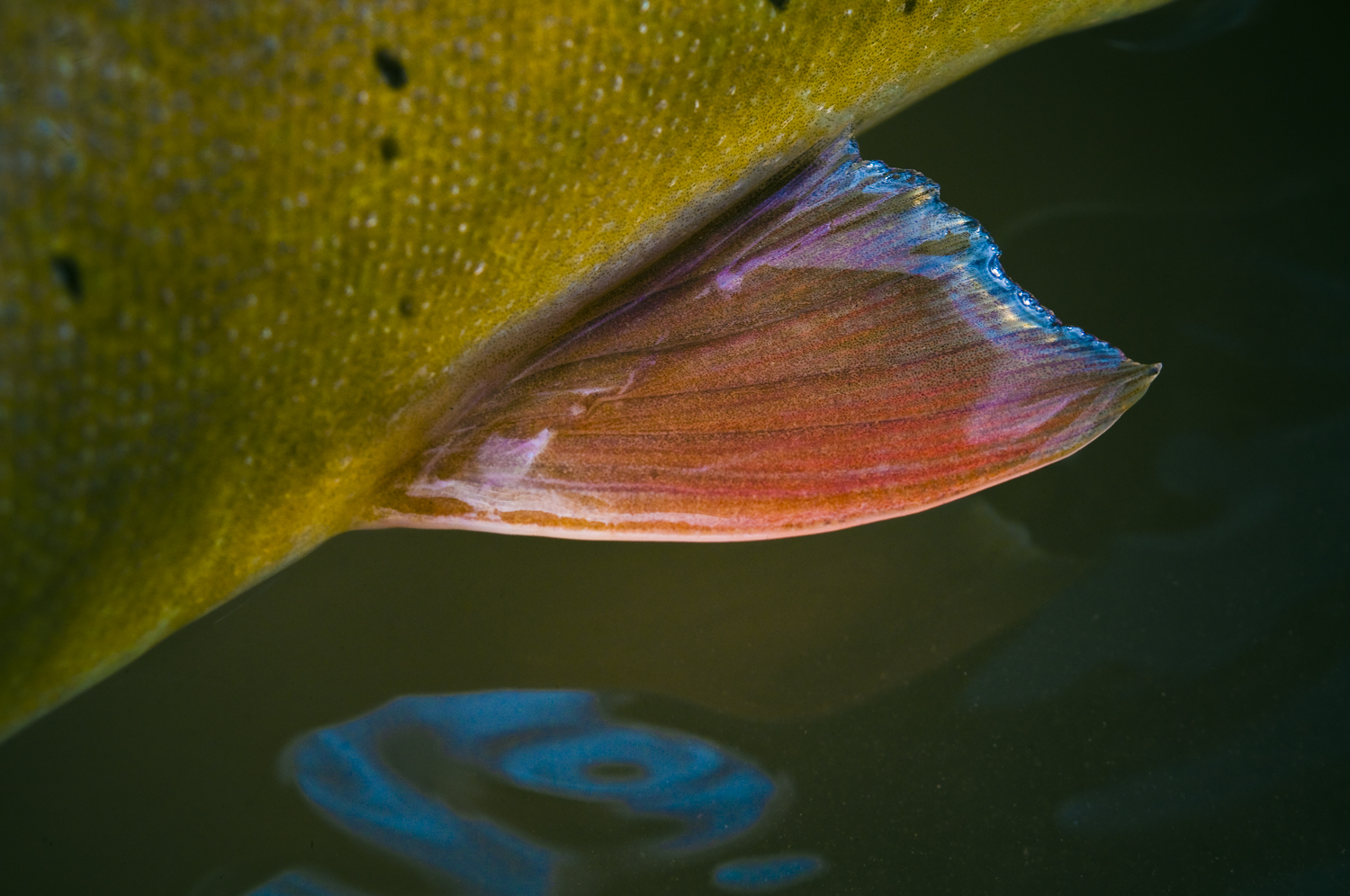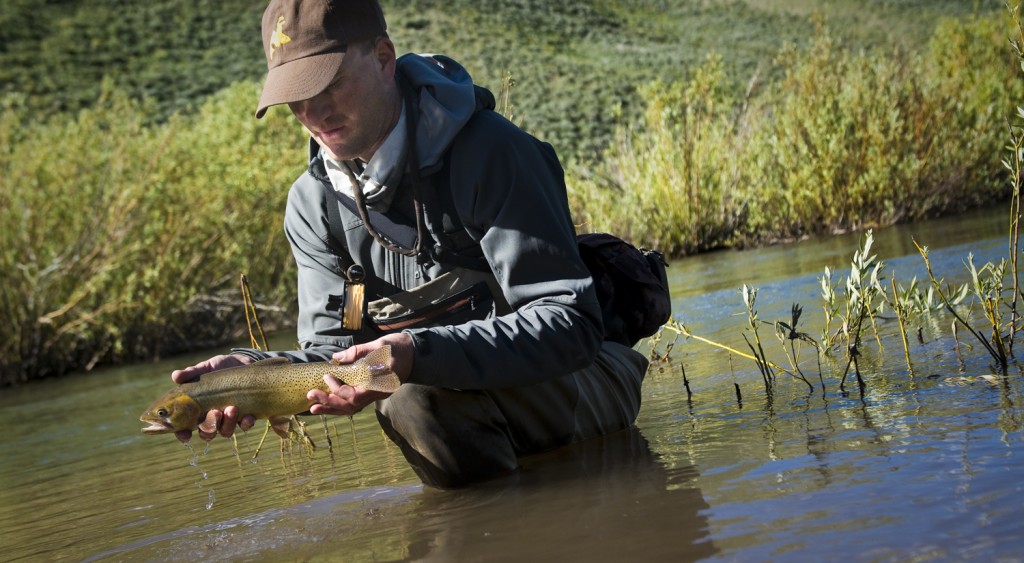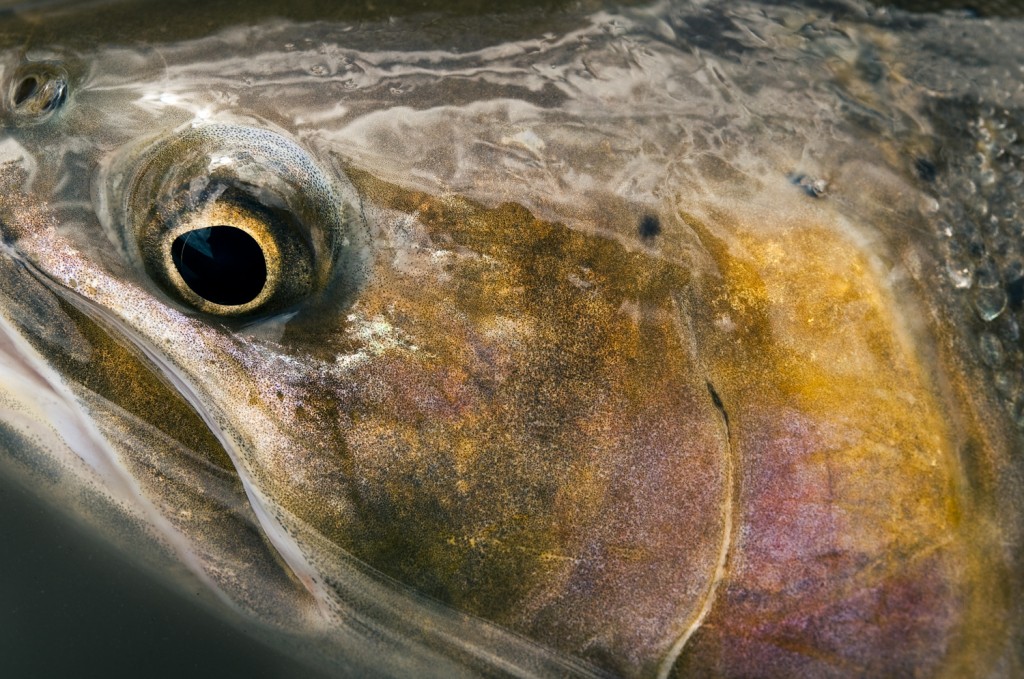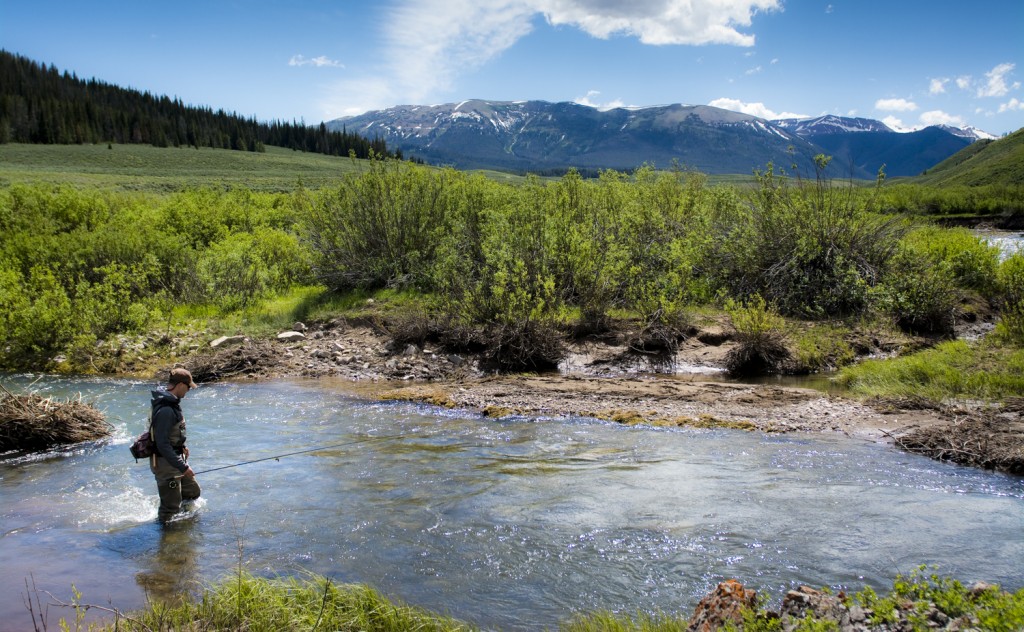Finding Cutthroats and Balance in Wyoming

Blue green water, a little high, but lower than last week. It looked fishy. With a couple hours of light left it felt like we might have hit it perfectly.
Walking back to the truck to gear up my buddy hollered.
“Sounds like air is coming out of a tire.”
Sure enough, there was an irreparable gash in the sidewall. I’d planned on getting new tires in the fall. Now I just hoped I could coax them out of the mountains. Figuring, we’d quickly change the tire and then fish, we discovered one of the lug nuts had been smashed and the tire iron wouldn’t fit over it.
Thirty miles of dirt had put us in the heart of the Wyoming Range, a rugged range that anchors the western side of Wyoming before it dissolves into the Salt River range to it’s west and the Gros Ventres to the north.
A pair of leather gloves, a hatchet and some red neck engineering ultimately proved the answer and we managed to get the spare on. With light fading, thoughts of fishing vanished. Instead, we limped down the road, set up camp and raised a glass of scotch.
Since 2005 Trout Unlimited and sportsmen of all stripes have been working to ensure that the Wyoming Range stays as it is – a home to three species of native cutthroat trout, big deer, big elk, Shiras moose and all the recreational opportunities they afford. For nine years, oil and gas companies have been eyeing development for just over 41 thousand acres in the range, waiting for an answer from the Forest Service, the agency tasked with deciding the future of the area. If developed, those assets – fish, game – and the opportunities sportsmen see in them stand to be jeopardized.
Louis and I came to fish but we also came to see this country and think about how it would be impacted by oil and gas development. Energy development is vital to Wyoming and our nation, but so are trout and wild places. The Wyoming Range is wild and rugged, with almost no development. Nearby the Upper Green River basin holds one of the largest natural gas plays in the country. With the intense development to the east and the south, it seems a small request to keep some patches wild, especially since they stand to yield, at most, a couple hundred wells.
 The next morning, we woke to frost on our bags, even though it was mid June. Hot mugs of coffee in hand we made a short drive to South Cottonwood Creek. With the spare tire, there would be no long drives until we headed out of the mountains, which was fine with us. We were in the heart of prime trout country.
The next morning, we woke to frost on our bags, even though it was mid June. Hot mugs of coffee in hand we made a short drive to South Cottonwood Creek. With the spare tire, there would be no long drives until we headed out of the mountains, which was fine with us. We were in the heart of prime trout country.
It was tempting to throw dries, but the water was too fast and cold to really entice trout to the surface. With fish holding only in deep slow runs, streamers worked and nymphs were unstoppable. We were lucky to catch the Colorado River cutthroats that make this part of the range home – gorgeous specimens, with big shoulders, yellow bellies, and neon orange slashes under the jaw.
There is something special about native fish. Don’t get me wrong, I spend more time fishing for rainbows and browns (not native in my neck of the woods) than anything. But there is simply something to be said for a fish that is living in the place it evolved. Maybe there are better reasons, but that’s what it always comes down to for me. And I don’t think I’m alone. Which makes preserving the places they live that much more important.
 Protecting this place and these fish is no simple task. It takes a variety of ingredients including time, science, collaboration, and pragmatism. Sportsmen have been an integral part of the process. All told about 30 sporting groups, united as Sportsmen for the Wyoming Range, have worked with Forest Service, Wyoming Game and Fish, local land owners and government officials, to gather information and build towards a solution. However, ultimately the fate of the oil and gas leases in question, lies with the Forest Service.
Protecting this place and these fish is no simple task. It takes a variety of ingredients including time, science, collaboration, and pragmatism. Sportsmen have been an integral part of the process. All told about 30 sporting groups, united as Sportsmen for the Wyoming Range, have worked with Forest Service, Wyoming Game and Fish, local land owners and government officials, to gather information and build towards a solution. However, ultimately the fate of the oil and gas leases in question, lies with the Forest Service.
This winter it is likely that the Forest Service will release new information on how energy development could affect this part of the Wyoming Range and make a decision on whether or not it will be allowed. The public, for whom the Forest Service manages the land, then has an opportunity to voice its opinion as part of that process.
In my mind it’s important for those of us who fish, who value wild trout, who value wild places to speak up and let our voices be heard. With two kids of my own who are just learning to fish, I want to keep the Wyoming Range like it is; a place with some of the most sustainable populations of native trout found in the West. But I also want to develop our energy resources responsibly, in those places where our fisheries won’t be in jeopardy. Wyoming not only pulls more than it’s weight in developing energy for our nation, but the revenue it generates benefits our schools, roads and community resources across the state. A bunch of it goes back to fish and wildlife as well.
In Wyoming we can do both. We need to do both.
Fingers numb and satiated by the pull of trout we tuck our rods under the windshield wipers. We crack a beer and let the afternoon sun warm our hands. Soaking it all in we feel fortunate to be in the presence of such wildness and can’t help but hope that things will forever stay as they are, giving us one more chance at a waiting trout.
Special thanks to Louis Cahill for sharing his images with us. In addition to being a great fishing partner Louis is a world class photographer who also runs Gink and Gasoline, one of the best fly-fishing websites out there.



How often do you and the G&G guys make it out on the water? Talk about a dream team!
Ha! Louis has become a good friend and we’ve been fortunate to get together a couple times a year.
Thanks for the article. I having just moved out of the West after 16 years I’m really going to miss fishing the Wyoming Range. Of the couple hundred streams I’ve fished in the West (5 or 6 on the Wyoming range alone) I would have to rank the Greys River as one of 2 streams that stand out above all others. The ease of access (only a 100 miles on forest roads most trips) was both a blessing and a curse however. My other standout, 6th Water in Utah was much harder to access over rough terrain devoid of foot trails in the middle but the nearly complete solitude there made up for the average size fish being a bit under the 15 inch mark of the Greys. Still both were great streams where 50 trout in a Summer afternoon was the norm and a chance at a fish mid twenties every outing. Maybe I’ll rethink selling my property next to the Wyoming Range after all.